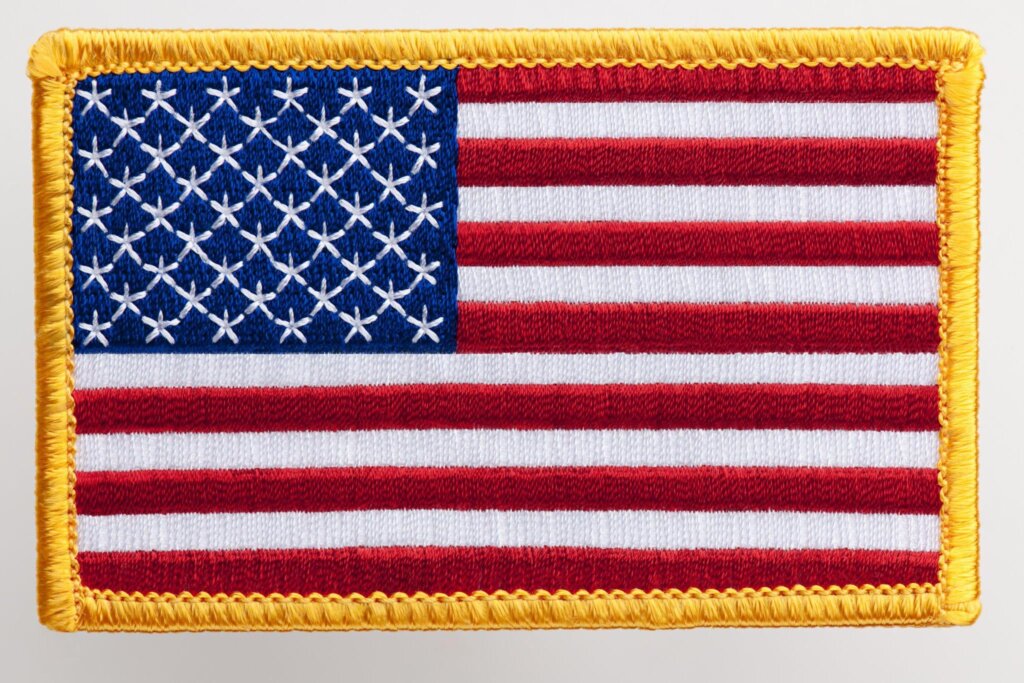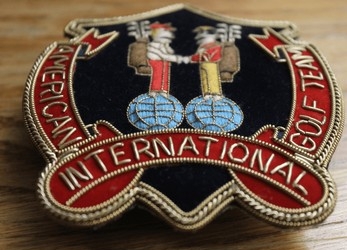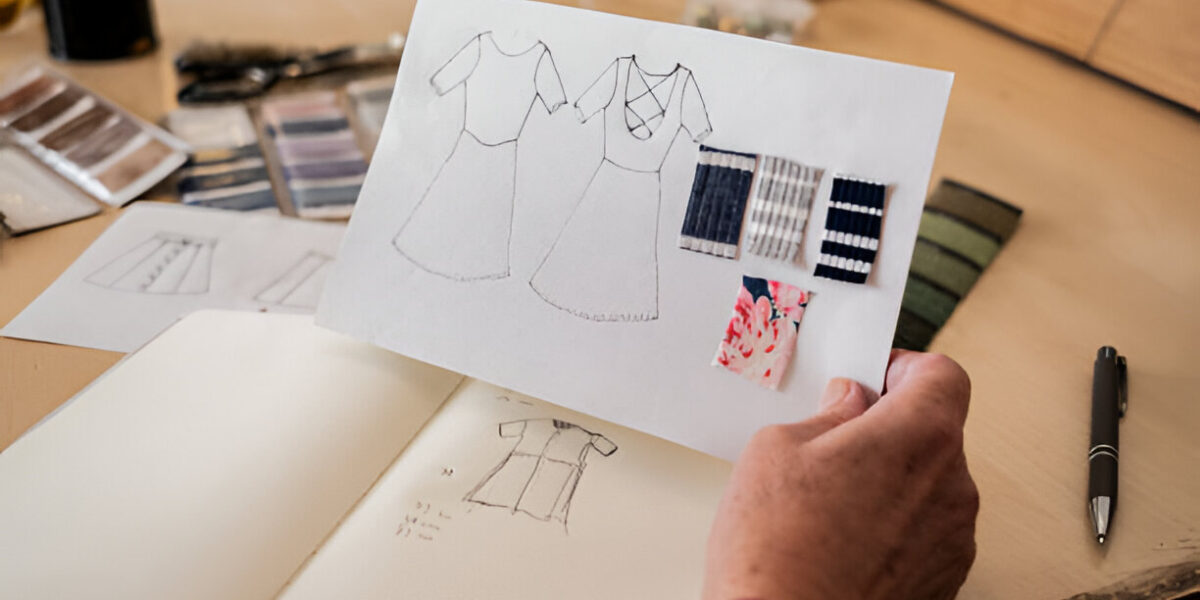A style from the 1980s and 1990s is making a comeback: sewing patches onto clothes. When you put a few beautiful, vibrant patches on the white shirts and denim jackets, how cool do they look? They are there to add interest to your clothing and provide you with the opportunity to express yourself. By applying patches, you can easily add any form of logo, pattern, color, and shape to the types of patches for clothes. They are worn by the police, scouts, numerous sports teams, the military, and even those of us who just like to look good.
Patches are a great way to promote your brand, regardless of how big or little your company is. With personalized patches, you can make something distinctive and captivating that will attract notice and pique interest in your brand.
Many of the most recognizable brands in the world have used patches for a long time. Consider Microsoft, Pepsi, NASCAR, John Deere, or Pepsi to grasp the idea. Everywhere the wearers/users go, your brand is seen when your unique patches are seen on shirts, hats, coats, backpacks, etc. That is effective advertising, and it is terrific advertising.
Although the trend is not new, it is nevertheless unquestionably current and fascinating today as it was then. Today, there are many various kinds of patches, and each one has a unique purpose. There are numerous varieties of patches available. The top 9 types of patching are shown below for your knowledge.
What is Patching in Clothing?

Patching is a method used to fix or add missing, damaged, or worn-out parts to textiles and apparel. Self-fabric, contrasting fabric, lace, trim, and appliquéd patches are the most popular kinds of patching.
Fixing or repairing clothing holes with patches, sometimes known as badges, is referred to as patching. Cloth badges can be found on a variety of items, such as jackets, vests, and hats, while embroidered patches are frequently employed to give an outfit personality and uniqueness.
It can be done using three different patches technique: hand stitching, machine sewing, and embroidery. Additionally, as with a decorative appliquéd patch, it is feasible to combine techniques like fusing and machine stitching. Patchwork is made from hand-cut pieces, therefore there will always be some flaws. As a result, it is genuinely unique.
How Many Types of Patches Are There?
There are various types of patches, including chenille and name patches, leather and PVC patches, woven and stitched patches, bullion, and printed or iron-on patches. Patched clothing manufacturers, such as bags, coats, shirts, and so forth, can be used to make apparel more trendy and intriguing.
To attract the attention of others around them. Numerous fashion patch accessories, such as backpacks, have various forms of patchwork to add personality or style appeal. Let’s discuss the key different types of patches.
Embroidered Patches

The best option for designs with a lot of contrast is embroidery for patches. The greatest method to enhance your design and ensure that your logo or artwork stands out on your product is to use embroidered patches, which are created by combining a variety of vibrant thread colors.
Probably the most common kind of patch is this one. You have the option of creating your patches or selecting a premade one. While they are most frequently added to denim and leather jackets, they may be added to any form of clothing because they are an inexpensive and stylish alternative. Patches with embroidery are frequently seen on uniforms, jackets, and headgear. They have a twill base, which can be used for embroidering a special design. Additionally, you have the option of selecting 50%, 75%, or 100% embroidery, which indicates how much of the patch is embroidered and how much is plain.
Hundreds of thread colors are available to match your logo or drawing, making embroidered patches the ideal choice for their price, durability, and design flexibility. Some of their designs can “pop” off the patch with true depth thanks to their distinct texturing. They are also time-friendly given that they are simple to make.
Woven Patches

A woven patch is the finest option if you need to include minute details that will be displayed on your brand. Because of its tighter weave, even the smallest letter may be sent while taking up less space. They work better for short texts than for embroidery services.
Instead of being embroidered on the fabric, thinner threads are weaved together in this instance. Woven patches can be quite detailed, however, embroidery won’t be able to capture minute details. These are therefore ideal if you require a design or text with additional small embellishments.
Embroidered patches offer several advantages over woven ones, although woven patches may “pack in” more elements, like small inscriptions, because of their tighter weave. They lack the “texture” of embroidery, but that doesn’t matter for small lettering because it still looks good.
PVC Patches

The three-dimensional, realistic-feeling patch looks great on the product of your choice. PVC patches feature a rough texture, absorbent threads that can take in mud and water, etc.
These have a rough, modern appearance. They are frequently employed for unique designs. They can have numerous details and are composed of plastic.
PVC patches are tough, rubberized emblems that withstand dirt, water, mud, paintballs, and other things well. With the special material, you may create custom “sculpting” for a three-dimensional impression and a wonderful tactile feel.
Chenille Patches

Typically, these are used to signify a college or a team. Uniforms, jackets, and sweaters all have them added. They have a special feel and are made of two layers. Its surface is so fuzzy and interesting because one layer of them is made of felt.
Because of their cozy, woolly fluff, chenille patches—which are now considered dated—are once again fashionable. Although threads don’t reveal many details, they perform a good job of reflecting simple text or design. They complement thick, woolen hats, stockings, and sweaters perfectly.
Although Chenille patches are outdated, they are also back in style. These fuzzy threads don’t display detail effectively; instead, bright, vibrant pieces with straightforward text or design are where they shine.
Printed Patches

Give a realistic account of your dreams. Because these labels are simple and comfortable to apply to clothing, printed patches are frequently used to print graphics on t-shirts. It has much character development, is reasonably priced, and is delivered extremely quickly.
These are the most recent developments, and you can choose from a wide variety of designs and pictures because they involve printing a photo, text, or other images onto a piece of cloth. They are simple to make, but they don’t resemble a typical patch.
These are more or less wearable photographs—or any other design with a lot of words—printed using the same method used to print on t-shirts. Ideal for jobs with tight budgets and schedules or when you just want a literal image on a patch.
Bullion Patches

The regal patch types have the most interesting appearance. VIPS-specific design with a branding objective. It sits atop velvet with a wholly premium appearance and is made up of 80% of metal. With a lengthy hand-making process, a gold patch is out of the question financially.
Because of their superior quality, attractive appearance, and durability, these patches are more formal. Wires, beads, and felt are just a few of the other elements that they may contain.
These patches are made with gold and silver metal threads for added weight, substance, and eye-catching appeal. These take time to build by hand and aren’t very inexpensive, but they’re undoubtedly worth it for the unmistakably high-end look they provide.
Iron-on Patches

Clothing with patches and accessories can be easily customized using iron-on patches. Applying these patches with heat is quick and simple. Uniforms, headgear, backpacks, shirts, and jackets are frequently embellished with iron-on patches.
Iron-on patches have a layer of plastic backing and a thin coating of heat-activated glue/adhesive, unlike embroidery patches, which must be stitched on. You can apply an iron-on patch to something without having any sewing knowledge. The patch is simply quickly placed where you want it using your clothes iron. The forms, sizes, and colors of iron-on patches are endless.
Leather Patches

Leather is one of our most adaptable patches since it can be made to look both rugged and quite sophisticated. In addition to alternatives like imprinted logos, rivets, and more, we provide consumers seeking an economical or vegan alternative with both opulently thick skins and synthetic leather.
Leather patches leave a trace, however subtle or trendy. The most typical and popular location frequently employed by many fashion labels, outdoor bag companies, and leather portrays both the highest class and an outside attitude. Both opulent thick skin and faux leather are available at Austin Trim.
Name Patches

This embroidered patch’s name clearly states what it is for. You are free to display your signature, slogan, and trademark. Name patches can be created using any material and color of your choosing, most likely the color that makes up a sizable amount of your product or is distinctive for your company. Business owners should use patches since they allow the team to grow alongside the brand.
By using our dedicated name patch technology, which is technically an embroidered patch, you can create a “base” template and have up to thousands of individual names on each without having to pay for a “new” patch design every time like other rivals.
What Are The 6 Types of Adhesives?
Beeswax and white rice, which were once utilized as adhesives, are no longer in use. Adhesive currently falls under numerous categories as a result of advances in chemistry and sophisticated technologies. Adhesives cannot be categorized into several categories using strict standards.
The six most popular types of adhesives are rubber-based, moisture-curing, solvent-based, hot-melt, water-activated, and pressure-sensitive adhesives. There are numerous other forms of adhesives as well. To understand more about how they function and why they are so well-liked, let’s examine each one in turn.
A biodegradable adhesive: The solvent is not necessary for these adhesives. Instead, they heal without the presence of air. Putting two distinct joints together and tightening them against one another is the most typical use of anaerobic adhesive. These adhesives are applied with less aerial pressure than volume.
Pressure-sensitive adhesive: Additionally, they lack solvents. They work by exerting a little pressure on the surface as opposed to using water or heat. They rely on pressure to form bonds with the surface because they do not respond to the surface during application. Without damaging the surface, they can be removed from it with ease.
Polymer adhesive: The headline claims that polymers are formed of polymers and are stronger and more flexible than the majority of other adhesives. These qualities have also led to their widespread application in the building industry. They are flexible and ideal for constructing infrastructure.
Hot-melt adhesive: They are delivered in cylinder-shaped containers. This is where you might discover hot melt adhesives if you’ve ever used a glue gun. They dissolve using heat, then harden to exert the most energy on the surface.
Acrylic adhesive: The most popular substrate for acrylic adhesives is cyanoacrylic, though there are other bases as well. Metals are bound together by severe bondage. The most widely used acrylic adhesive worldwide is super glue. To generate acrylic in a variety of shapes, additional types are produced using varying ratios.
Epoxy adhesive: Epoxy adhesive is made when you combine resin and a hardener. It is the only kind of adhesive that is DIY-able. The glue is referred to as two parts because both portions are combined in a 1:1 ratio.
FAQs
What Elements Contain Patches?
Twill, sailcloth, or another appropriate fabric for the top layer, typically made of cotton, polyester, or a combination of these materials Heat seal with backing material (crinoline or peel apart).
How Do Weave And Embroidered Patches Differ From One Another?
Given that there are numerous distinct kinds of patches and that some of their variations are fairly slight, there is no conclusive response to this question. Embroidered patches, on the other hand, might be a better option if you’re wondering what kind of patch will look best on your project.
What Are The Fuzzy Patches Called?
The two-layer composition of chenille patches gives them a fluffy/fuzzy surface. The term “letterman patches” is also used for chenille patches. Why? They are worn on high school letterman jackets because they are that particular of the patch styles
Final Words
There are many distinct patch kinds since various factors need to be taken into account, including cost, material, turnaround time, durability, texture, and a host of other things. You can pick the ideal patch to meet your needs by using the methods we outlined above, which covered a variety of alternatives.
Related : Custom Hoodie Manufacturers
Related : Custom Swimwear Manufacturer




